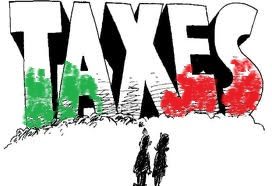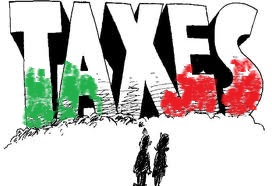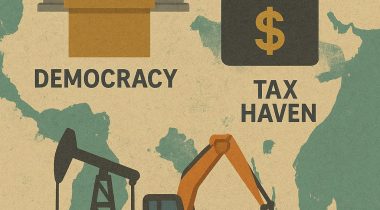
Naomi Fowler ■ Yet another “last chance” for Italian tax evaders to comply with the Italian tax code

Old Italian “habits” die hard, says Lecturer in Accounting and Taxation at Nottingham University Business School and member of the BEPS Monitoring Group Tommaso Faccio. As if the voluntary disclosure programme they offered citizens less than two years ago wasn’t bad enough, here comes yet another one, less than two years later…
We generally take a very dim view of tax amnesties. (The Italian government denies their latest move is a tax amnesty). We’ve written many times about how they’re short term palliatives that come at the expense of much larger long-term revenues. In any case, expectations of the revenue they might raise time and time again fall far short of the eventual reality. Just as importantly they damage democracy,  reinforcing the sense that there’s one rule for the rich and powerful, and another rule for everyone else. And that’s whether it’s in Indonesia or the UK’s terrible tax deal with Switzerland, which offered an amnesty for people who had illegally stashed their cash in Swiss banks without paying tax on the income. We said at the time this reprehensible amnesty for criminal tax evaders was a very bad way to go and we were proved absolutely right.
reinforcing the sense that there’s one rule for the rich and powerful, and another rule for everyone else. And that’s whether it’s in Indonesia or the UK’s terrible tax deal with Switzerland, which offered an amnesty for people who had illegally stashed their cash in Swiss banks without paying tax on the income. We said at the time this reprehensible amnesty for criminal tax evaders was a very bad way to go and we were proved absolutely right.
Just this week Jersey has announced what it’s calling a “Voluntary Tax Disclosure Opportunity” in 2017, so Jersey taxpayers can ‘bring their tax affairs up-to-date’ before “penalties are strengthened”.
Now we hand over to Tommaso Faccio for his analysis of Italy’s latest ‘last chance’ amnesty.
Italy has a long history of tax amnesty programmes established under a broad variety of names and rules. Interestingly, every new programme has been described as “the last chance” for tax evaders to comply with the Italian tax code.
The draft Italian 2017 Budget approved on October 15 includes, in addition to the reduction of the headline corporation tax rates for businesses from 27.5 per cent to 24 per cent, a controversial reopening of the voluntary disclosure programme which is expected to yield around €2.6bn.
Under the previous voluntary disclosure programme, which closed on November 30 2015, having provided €4bn in additional tax revenue, participants had to agree to pay all outstanding taxes when declaring their undeclared assets held in offshore banks, but were subject to much-reduced administrative and criminal penalties.
Under the previous voluntary disclosure programme, it was also difficult to determine at the outset the effective tax rate to be applied to the undeclared assets, which was agreed on a case by case basis.
In its revised form, the new voluntary disclosure programme is based on two flat rates of 15% and 35%, significantly lower rates than what was on offer under the previous voluntary disclosures programme and to make things worse, its scope is extended to undeclared cash.
The Italian government has stressed that the terms of the voluntary disclosure programme are “a long way from being comparable to a tax amnesty”, but the risk that this undeclared cash is linked to activities such as money laundering, corruption and other illegal activities is high.
Whilst the participants to the programme would have to self-declare that the source of cash is not from illegal activities and the tax authorities are allowed to start an investigative procedure if they don’t believe the participants’ declaration, ensuring that the source of cash is from legal activities is likely to prove complex in many cases.
The renewal of the disclosure facility programme is of course good news for tax evaders, but it sends all the wrong signals for a government that has recently agreed automatic exchange of information agreements with a number of tax havens including Switzerland, Monte Carlo, Liechtenstein and the Cayman Islands to fight tax evasion, which runs to about €90bn a year according to the government’s own estimates.
A number of Agenzie delle Entrate’s (the Italian tax authorities) personnel have condemned this move, as it is likely to put pressure on an already stretched organisation which is dealing with outstanding tax debts of about €780bn[1].
There is also therefore a high risk that the voluntary disclosure programme will yield less than the amount included in the draft budget. When the first voluntary disclosure programme was announced at the end of 2014, it was originally costed to raise about €6.5bn, but in fact only raised about €4bn. This stark difference between expectation and reality when it comes to voluntary disclosure programmes is not unique to Italy.
The inability to successfully work through the additional cases on top of existing workloads was claimed as one of the reasons why the UK tax authorities lowered the amount it expected to raise from its disclosure facility with some of their crown dependencies launched in 2013, which was originally estimated to raise about £1bn, but earlier this year that was lowered to around £270m.
Voluntary disclosures are also detrimental in the long-term, as they significantly reduce the compliance incentive for other tax payers. The expectation is that whilst there will be additional taxes recouped through the voluntary disclosures in 2017, this will be followed by a significant drop from 2018 onwards, as taxpayers come to expect that a new voluntary disclosure programme will be announced in the future.
[1] OECD Italy’s tax administration review, February 2016.
Related articles

Follow the money: Rethinking geographical risk assessment in money laundering

Democracy, Natural Resources, and the use of Tax Havens by Firms in Emerging Markets

Why Climate Justice Needs Tax Sovereignty

Why are we gathering in Brazil to talk climate? Why now?
Know your red flags: Geographic risks in (suspicious) transaction monitoring
28 August 2025

The myth-buster’s guide to the “millionaire exodus” scare story

Money can’t buy health, but taxes can improve healthcare

The elephant in the room of business & human rights
The elephant in the room of business & human rights
UN submission: Tax justice and the financing of children’s right to education
14 July 2025

